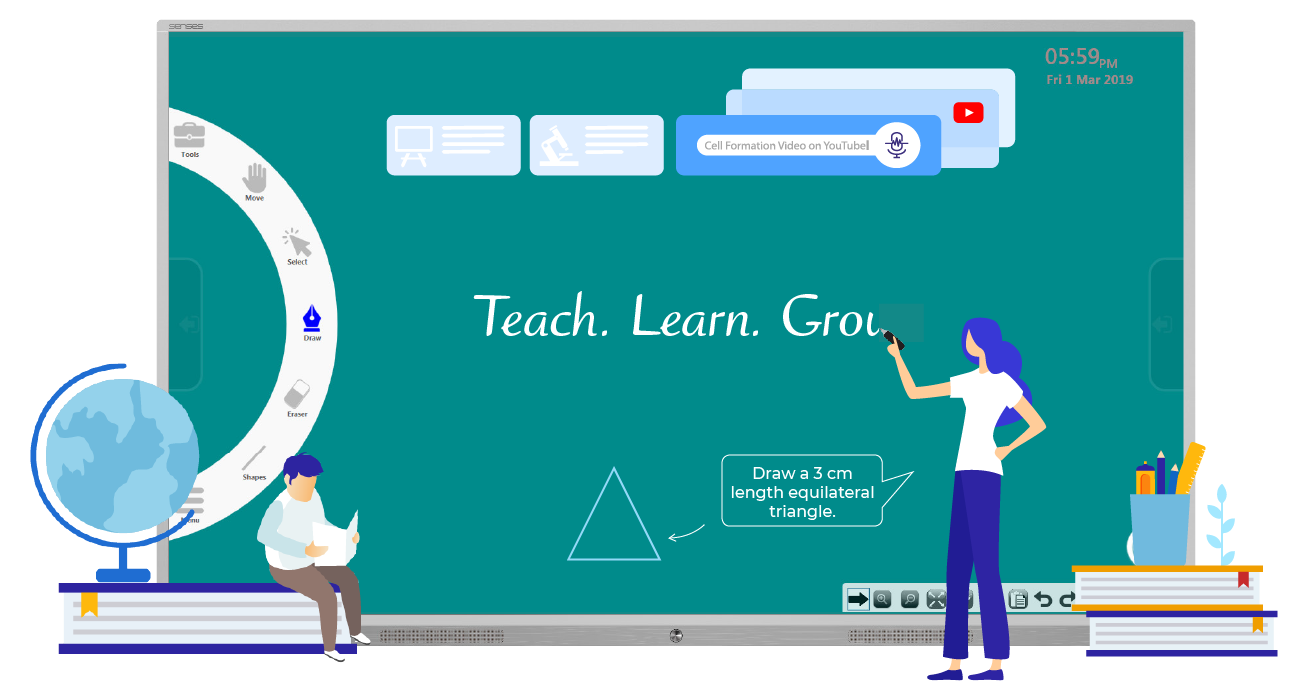Introduction: In recent times, the educational landscape has undergone significant transformations fueled by technological advancements and evolving pedagogical approaches. Collaborative educational systems have emerged as potent tools to enrich learning experiences by promoting knowledge sharing, teamwork, and interactive engagement among both students and educators.

Sense CLASSROOM
Simplifying Learning
This document delves into the concept of collaborative educational systems and their influence on the learning milieu.
Definition and Components: Collaborative educational systems encompass integrated platforms and strategies that facilitate collaboration and communication among students, teachers, and administrators. These systems typically integrate elements such as online learning management systems (LMS), virtual classrooms, discussion forums, real-time collaboration tools, and project management platforms. By harnessing these technologies, collaborative educational systems create an atmosphere conducive to collaborative learning and the exchange of knowledge.
Enhanced Engagement and Active Learning: Collaborative educational systems encourage active involvement from students, deviating from the traditional passive learning model. Through interactive functionalities like online discussions, group projects, and virtual classrooms, students can partake in dynamic learning experiences. This cultivates skills in critical thinking, problem-solving, and communication, while fostering a deeper comprehension of the subject matter.
Seamless Communication and Connectivity: One of the key advantages of collaborative educational systems lies in their capacity to facilitate seamless communication and connectivity among students and educators. Online discussion forums, chat features, and video conferencing tools enable real-time interactions, transcending geographical barriers. This connectivity empowers students to connect with peers, seek clarifications from instructors, and participate in meaningful discussions, expanding their learning network.
Nurturing Teamwork and Collaboration: Collaborative educational systems enable students to collaborate on projects, assignments, and group activities. These platforms offer features like document sharing, simultaneous editing, and version control, enabling students to collaborate effectively in a virtual environment. Through collaboration with peers, students acquire crucial teamwork skills, including effective communication, cooperation, and negotiation – all highly valuable in professional settings.
Smart Learning the Fun way
Features
Collaborative Solution
Remote Classroom
Virtual Classroom
Connect Upto 300 Students
Instant Classroom Session
Virtual Blackboard
Record The Lecture
FAQ
Superior technology meets class leading software
-
Physics, Chemistry, Maths
Create & share school calendars & classroom timetables, synchronize with your Google Calendar
-
Intelligent Shapes
Create & share school calendars & classroom timetables, synchronize with your Google Calendar
-
Browse the internet
Create & share school calendars & classroom timetables, synchronize with your Google Calendar
Classroom Scheduling Software
Create & share school calendars & classroom timetables, synchronize with your Google Calendar
Classroom Monitoring Software
Monitor all classrooms easily from one place, address a particular class using audio
Classroom Collaboration Software
Collaborate easily with the students in the classroom wirelessly. No app required on student devices


